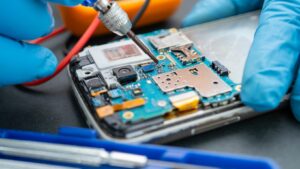
 In the ever-evolving world of technology, hardware virtualization has emerged as a game-changer. It’s a feature that allows your computer to run multiple operating systems simultaneously, offering a wealth of benefits from improved system utilization to simplified IT management. But how do you leverage this powerful tool?
In the ever-evolving world of technology, hardware virtualization has emerged as a game-changer. It’s a feature that allows your computer to run multiple operating systems simultaneously, offering a wealth of benefits from improved system utilization to simplified IT management. But how do you leverage this powerful tool?
If you’ve ever found yourself wondering, How do I turn on hardware virtualization?, you’re not alone. It’s a common question, often asked by those looking to maximize their system’s capabilities. This article aims to shed light on the process, providing a step-by-step guide to activating hardware virtualization on your machine.
How Do I Turn On Hardware Virtualization
Diving deeper into hardware virtualization holds the key to comprehending its functionality. Bridging gaps between hardware and multiple operating systems, it fosters simultaneous executions on a single computer system.
The Concept Behind Hardware Virtualization
Hardware Virtualization, also known as platform virtualization, places an abstraction layer between computer hardware and the operating system. This layer, known as the hypervisor, manages the hardware resources and helps create Virtual Machines (VMs). Each of these VMs, akin to standalone systems, run their own operating system, thus allowing multiple systems to share hardware resources.
For example, a computer running on Windows can also run other operating systems like Linux or MacOS simultaneously through VMs, without physically altering the hardware setup.
Its Importance in Computing
Hardware virtualization proves pivotal in the sphere of computing. It bolsters resource optimization by virtue of permitting multiple operating systems to run without conflict. Additionally, it  fosters system isolation, thus ensuring the performance of one VM does not affect another.
fosters system isolation, thus ensuring the performance of one VM does not affect another.
Specifically, in cloud computing, it facilitates resource sharing to accommodate growing business needs. This leads to substantial cost reduction as it curbs the need for dedicated resources for each user or application. It’s also an integral part of numerous modern technologies like Docker and Kubernetes, used for delivering software in packages called containers.
For instance, in a cloud-based storage solution, multiple users can store and retrieve data without their activities interfering with each other, thanks to hardware virtualization.
Through these subheadings, it becomes clear that hardware virtualization’s theoretical underpinnings and practical implications intertwine, shaping the landscape of today’s computing solutions.
The Prerequisites for Activating Hardware Virtualization
As hardware virtualization forms a central cog in modern computing schemes, activating it calls for certain prerequisites. Checking your device’s compatibility and updating your BIOS are critical steps in this process.
Checking your Device’s Compatibility
Initially, confirming your device’s compatibility with hardware virtualization is vital. It’s not a feature present on all systems, denoting the significance of this step. Specifically, Intel and AMD processors usually integrate this feature, recognized as Intel Virtualization Technology (VT-x) and AMD Virtualization (AMD-V) respectively.
You can check your processor’s compatibility with hardware virtualization by visiting the manufacturer’s website. Alternatively, use a software system tool, such as Microsoft’s “System Information” tool for Windows, which displays detailed information about your system’s hardware.
Updating your BIOS
 Following device compatibility confirmation, an updated BIOS is paramount. Since hardware virtualization is controlled at the BIOS level, a BIOS update often provides the performance boost needed to support virtualization.
Following device compatibility confirmation, an updated BIOS is paramount. Since hardware virtualization is controlled at the BIOS level, a BIOS update often provides the performance boost needed to support virtualization.
While the method varies across different manufacturers, common steps include visiting the manufacturer’s website, downloading the latest BIOS version, and installing it safely. Remember, incorrectly updating BIOS can cause system damage, so you’re advised to thoroughly follow the manufacturer’s instructions.
By ensuring your device’s compatibility and updating your BIOS, you’re setting up a solid foundation for activating hardware virtualization. Enjoy the benefits of running multiple operating systems and streamlined resources offered by this adaptable interface.
Virtualization Made Simple
Hardware virtualization’s role in today’s tech landscape can’t be overstated. It’s a game-changer, enabling multiple operating systems to run concurrently on a single device. It’s the backbone of modern technologies like Docker and Kubernetes, optimizing resource utilization and paving the way for cloud computing. However, its activation requires a compatible device and an updated BIOS.

